Valerie Gleeson Development Bursary
Orla O'Byrne
This bursary was used to fund a research trip to the marble-quarrying region of the Apuan Alps in Northern Italy in July 2021. I stayed for two weeks in the tiny village of Azzano with a small community of German sculptors who have run a marble-carving school there for 40 years called Campo dell’ Altissimo. This trip was delayed by more than a year because of Covid-19 and it was realised in a very different world to that in which I had written my initial proposal.
For years I have been drawing in chalk. As a drawer, deep research into the materials of my making became crucial at a certain point, something which has led me to make my own chalks and also to work in plaster of Paris. Chemically speaking, chalk and marble are the same and share the same chemical formula (CaCO3) and so learning to work with marble for the first time felt like arriving at the serious end of the same material. It has become a starting point for a whole new direction in my studio practice. In terms of my ongoing research into the relationship between artists and their materials, my time in Azzano was invaluable as I formed lasting connections with experienced sculptors who are immersed in this fascinating material.
Discussions about the environmental impacts of quarrying can get heated in Northern Italy. For at least 2000 years marble has been cut from the earth in the Carrara region and distributed throughout the world. The marble deposits in The Apuan Alps are so vast that it is not known how much marble is left. Environmental groups are worried about the impact of such quick erosion of the local landscape. With the current extraction rate close to one million tonnes of marble per year, some peaks in the Apuan Alps will be eradicated within decades. Bitter disputes occur when it’s traditional to dismantle our natural heritage on a small scale for economic reasons but then with the help of more advanced machinery a big industry evolves which is seen by objectors as greedy and reckless and seen by the harvesters as simply a continuation of their natural right to profit from their land. Our conflicting attitudes towards natural resources present us with challenges. What are our conservation responsibilities? Is it ok to keep extracting marble until there’s nothing left to take? During my time in Azzano I visited and photographed quarries, both abandoned and operational, with these questions in mind.
I originally proposed to spend just one week on a marble-carving course and the second week was to be spent doing other research in the locality. At the end of the first week, after a presentation of my work to a small gathering of local artists and supporters of the school, I felt the need to continue the stone-carving into the second week and was invited to do so by the organisers. It’s difficult to describe the intensity of struggling with a tough new material in the hot sun and the close human connections wemade as group. Most people I met at the Campo had not travelled or been in a group situation for two years because of the Covid-19.
As well as learning to carve marble, I visited stone-carving studios in nearby Pietrasanta and encountered the artists and artisans who work there. In quarries I gathered a large amount of photographic research material for future projects. I interviewed my teacher, the German sculptor Sven Rünger, for my MA thesis and the interview and images will also appear on his new website. The Campo dell’Altissimo have also asked to use my images on their website.
As I write (in October 2021) my marble stones have just arrived in a wooden shipping crate from Italy and they are now sitting around my studio. They signify an exciting new direction in my practice. My time in Italy has given me a wealth of research and experiences to draw upon as well as actual new skills and lasting human connections. I am deeply indebted to the custodians of the Valerie Gleeson Development Bursary.
Images: All images author’s own.

1. Collecting marble river stones from dried-out river beds in the foothills of the Apuan
Alps.
.jpg)
2. Giving a talk about my work at the end of he first week of carving at Campo
dell’Altissimo.
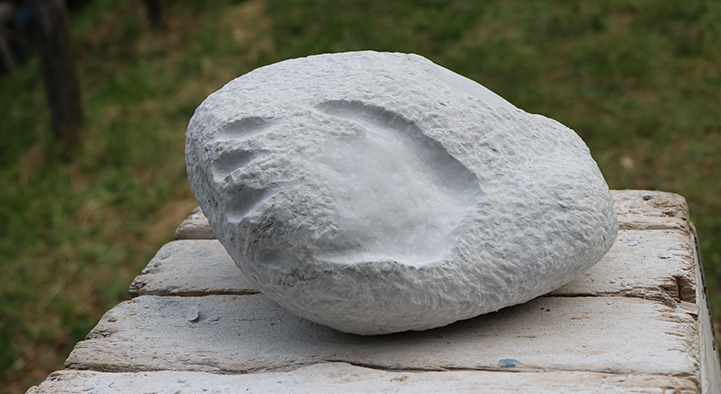
3. First carved marble piece. With carved indentations of my hands.
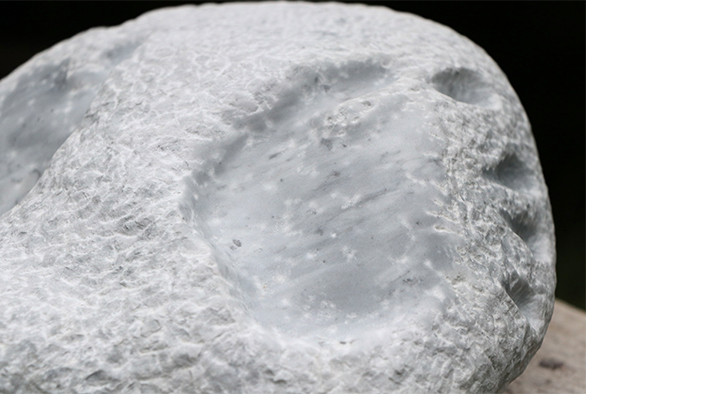
4. Detail of my first carved marble piece.
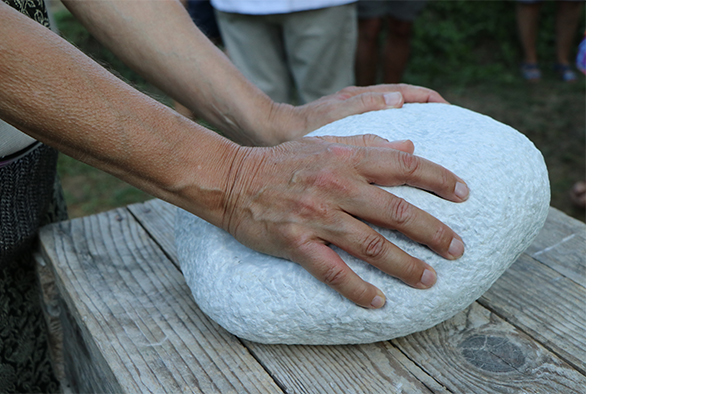
5. Members of the public tried out my piece during the presentation of our work at the end
of the first week.
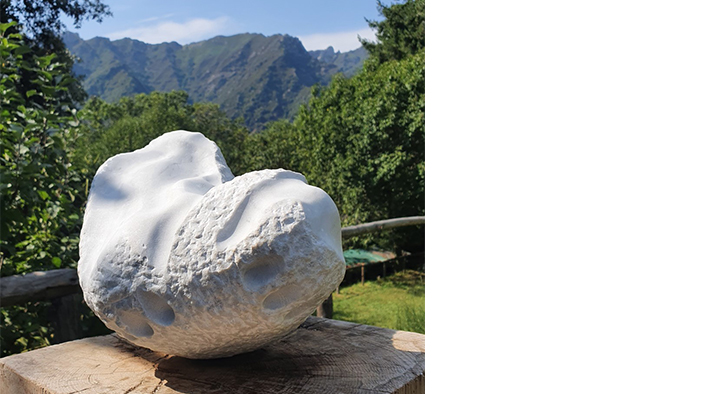
6. My second carved marble piece.
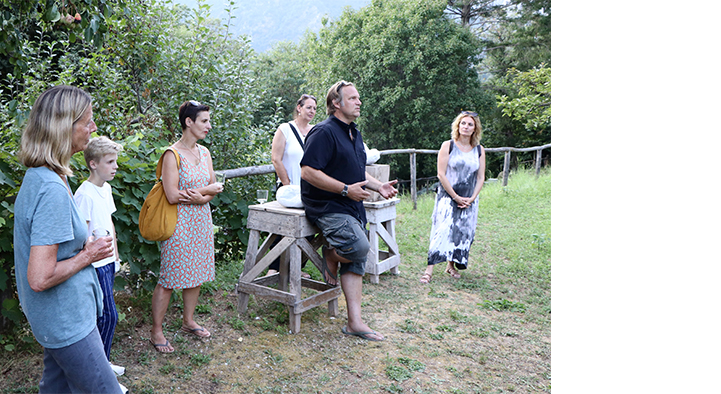
7. Group discussion at the Campo with our teacher, Sven.

8. On a visit to Studio Pescarella in Pietrasanta, I met Sauro Lorenzoni, who used to work
as an artisan in the studios of Henry Moore in Querceta, Italy.
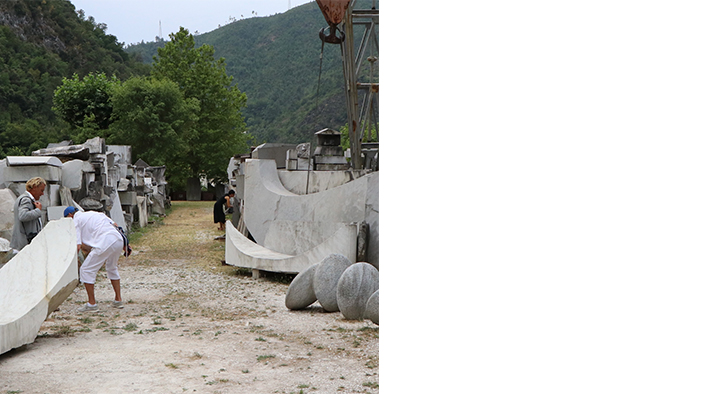
9. A visit to the remarkable Arkad Foundation, Serravezza.
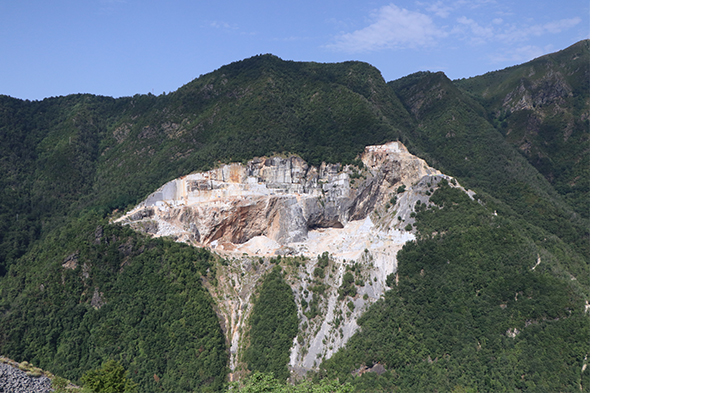
10. The quarry which Michelangelo opened in 1517 is still operational and was visible (and
audible!) from where we worked each day.
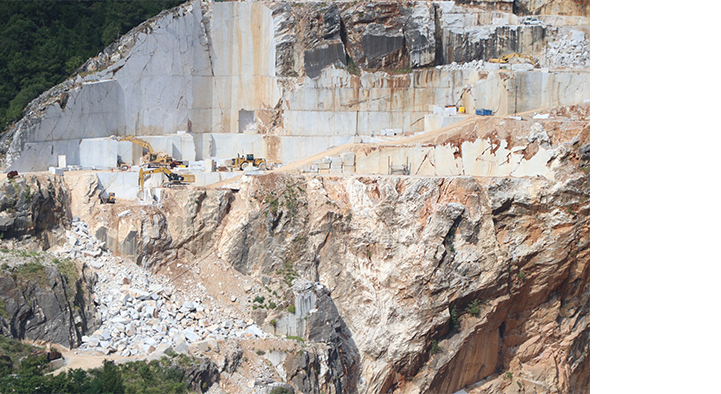
11. Detail of Michelangelo’s Quarry, as it is known locally.
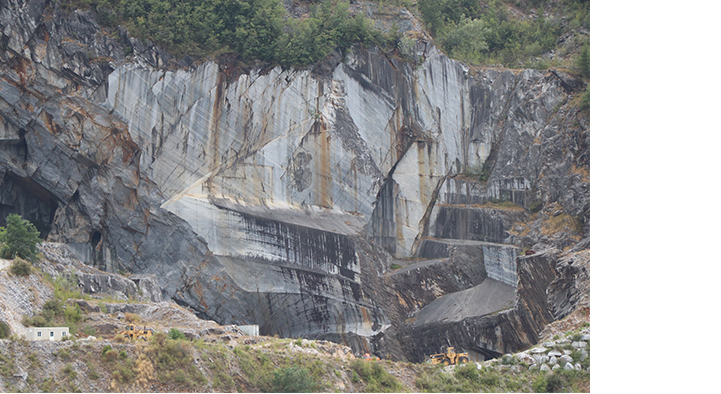
12. A working quarry near Serravezza
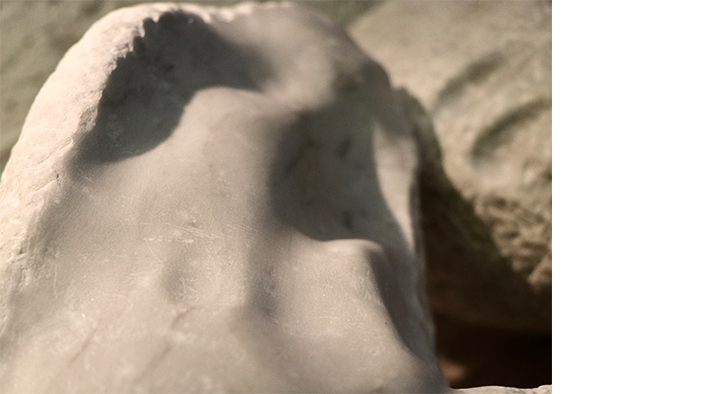
13. October 2021: my carved marble stones were shipped from Italy back to Cork.
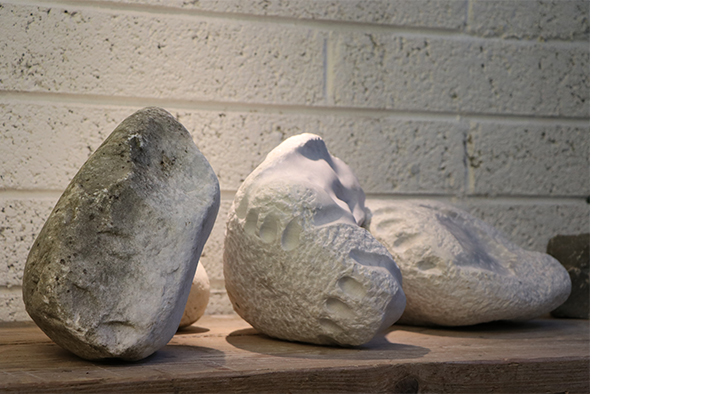
14. October 2021: detail of my carved marble stones in my studio in Cork.
All images author’s own.